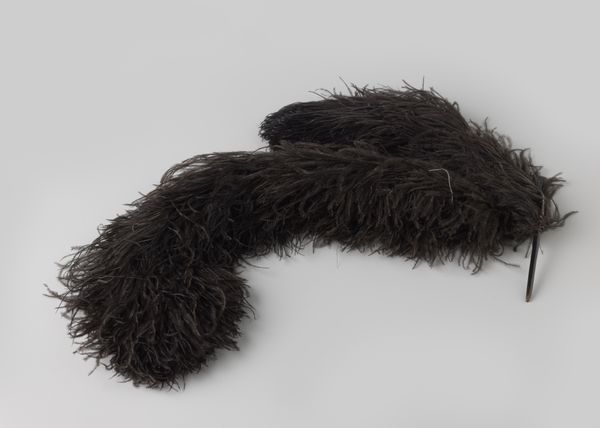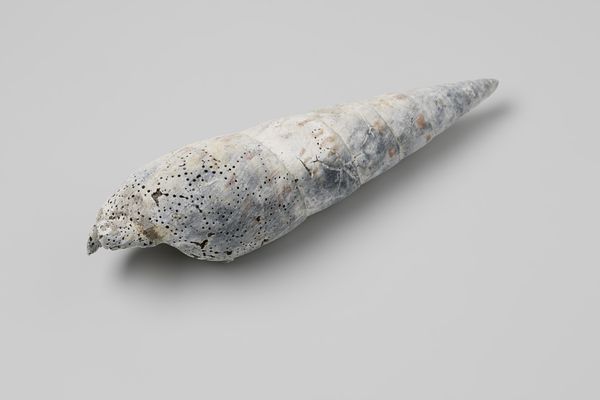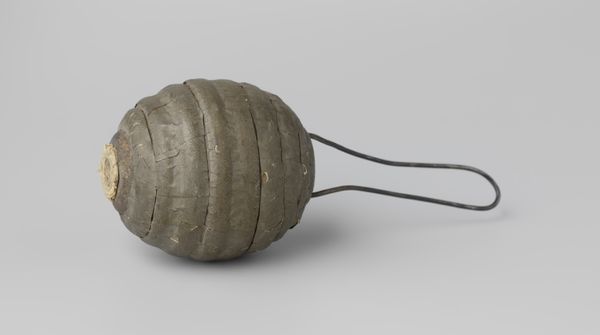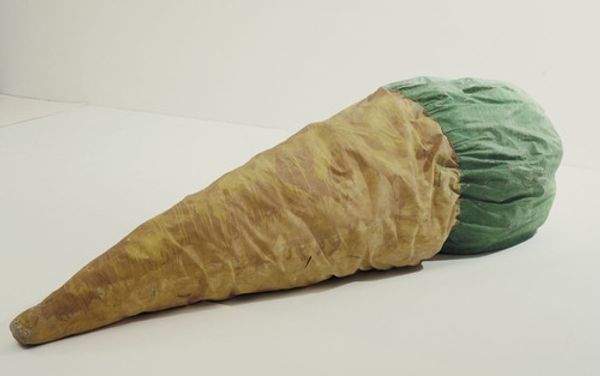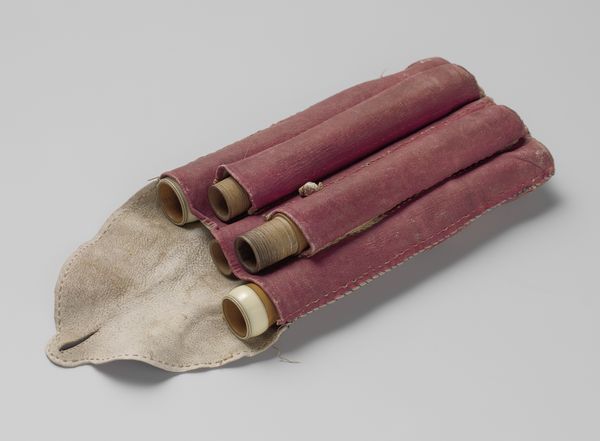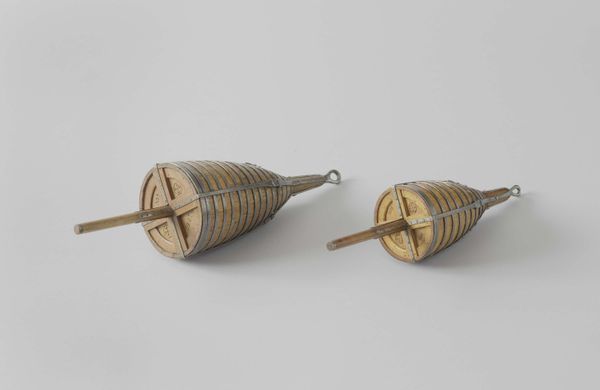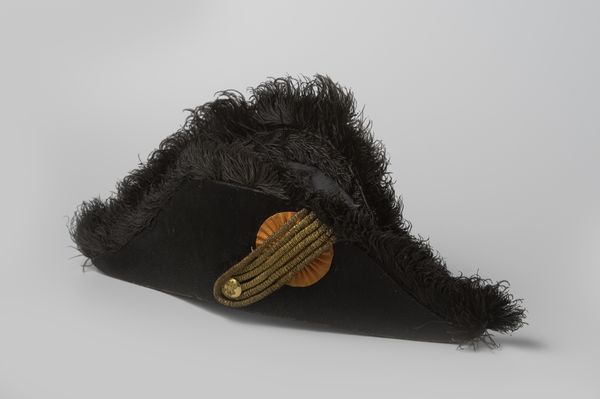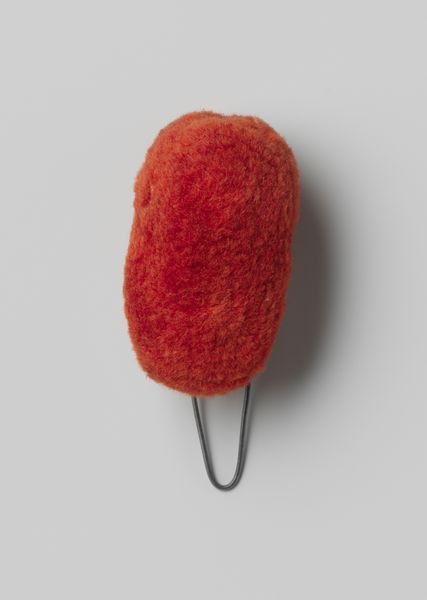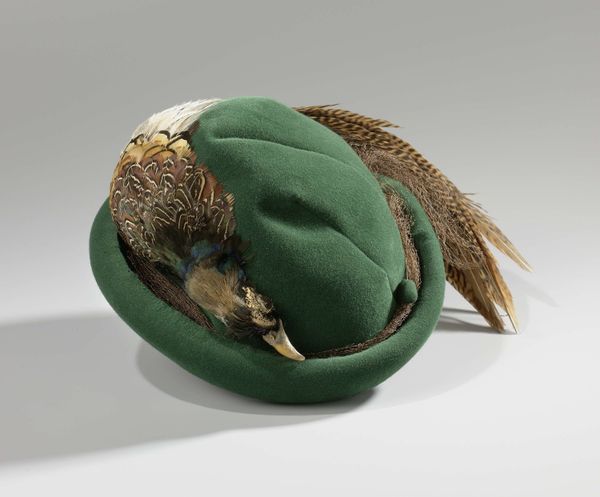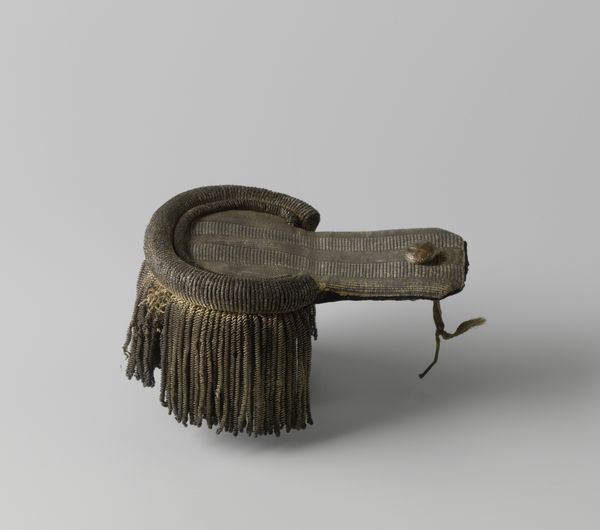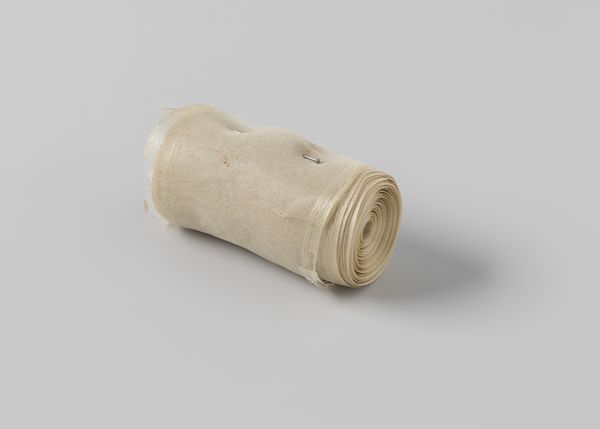
mixed-media, metal, textile, sculpture
#
mixed-media
#
metal
#
textile
#
sculpture
#
romanticism
Dimensions: width 34.5 cm, height 20 cm, depth 29.5 cm, diameter 4.5 cm, height 17 cm
Copyright: Rijks Museum: Open Domain
Editor: Here we have a pompom, estimated to be from 1828, intended for wear on a shako of the Royal Netherlands Marine Corps. It's crafted with mixed media, incorporating textile and metal. Its peculiar shape makes me wonder what statements about national identity it made during the Romanticism movement. What’s your perspective on this seemingly simple piece? Curator: It’s easy to dismiss an object like this as merely decorative, but I think it is so much more. It embodies a very specific time and the intersection of nationalism, identity, and even class. How do you think military adornment reinforces social hierarchies? Editor: Well, I suppose the Marines who wore the best-made, most flamboyant pompoms sent the message that they are an elite unit. Maybe, back in the day, Marines also thought their pompoms were beautiful. Curator: Exactly! And the specific colors, materials, and design elements all contribute to that message. Think about the power dynamics inherent in military uniform. How does this pompom visually contribute to the narrative of military might and perhaps, even national identity? Editor: It's a Dutch pompom, so the orange says something. Maybe loyalty to the House of Orange, because the Netherlands were a monarchy back then? But I don’t understand how a pompom could affect class... Curator: Consider who has access to these symbols of power and status. Uniforms, including their decorative elements like this pompom, serve to visually distinguish and legitimize certain roles within the military and the broader social structure. It reflects who belongs and who doesn't, reinforcing existing power structures. Does this make sense? Editor: Yes, it’s a new way for me to appreciate the complexity and significance of historical objects. So much can be packed into one little artifact. Curator: Precisely. By understanding the social context, we reveal not just aesthetics, but embedded narratives of identity and social standing.
Comments
No comments
Be the first to comment and join the conversation on the ultimate creative platform.
